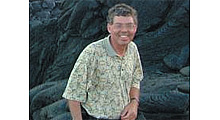
Doug Lung
WASHINGTON -- On March 1, the FCC authorized white space devices on a nationwide basis, two days after it announced the opening of public testing of Google Inc.’s TV band database system, and three days before it opened Key Bridge Global LLC’s database system for public testing.
Even though white-space devices can now be used nationwide, it’s too early to tell how long it will be before we see widespread deployment of these devices. Given the lack of TV broadcast spectrum and the availability of many alternative options in most urban markets, I would expect the first systems to pop up in rural areas where wire/fiber infrastructure is limited and the “last mile” could mean the “last 10 miles.”
However, given the potential problems with white-space device interference to wireless microphone and other broadcast auxiliary services in the TV band, it makes sense for stations to start looking at how they will register their use--if they haven't done so already. Experimenting with the two recently announced database systems is a good way to get familiar with the process.
As expected, the Google Spectrum Database has a clean look and a great interactive map showing what spectrum is available in a given area.
I checked the Los Angeles region and found that in the urban area no channels were available, and there were only one or two in surrounding areas. If you move into the valleys to the west, a few more channels open up. Drop down to San Diego and there are plenty of channels. If wireless microphone users haven't registered their channel, they may be surprised to find white space devices popping up there. In reality, given the close range and shielded environments most wireless microphones are used in, this isn't likely to be a problem unless you’re trying to do a remote news story with a white space base station on a pole nearby or there’s a white space consumer device in an adjacent building.
Google makes it very easy to register a wireless microphone--if you don't know the coordinates you can enter a street address, city and state or zip code. There are different forms for temporary use and licensed wireless microphones, as well as for registering MVPD receive sites. The FCC said that Google, with FCC Office of Engineering and Technology approval, implemented a test registration capability for registration of venues where unlicensed wireless microphones are used.
Key Bridge Global LLC's spectrum database system should also available for testing soon. When I visited the link provided in the FCC Public Notice, it said that the Key Bridge White Space Portal would be available on March 11.
Two TV Band Database Administrators have already completed their public testing and are available for “protected entities” to register their use of TV channels for wireless microphones, MVPD receive sites, and the like—Spectrum Bridge and Telcordia.
It’s interesting to see other countries looking at TV white spaces to help provide their citizens with faster and cheaper Internet. See “Digital Inclusion – The Philippines Bridges Digital Devide With TV White Spaces” at FutureGov.asia. The article notes that Singapore is also evaluating the use of TV white spaces.
The professional video industry's #1 source for news, trends and product and tech information. Sign up below.

Doug Lung is one of America's foremost authorities on broadcast RF technology. As vice president of Broadcast Technology for NBCUniversal Local, H. Douglas Lung leads NBC and Telemundo-owned stations’ RF and transmission affairs, including microwave, radars, satellite uplinks, and FCC technical filings. Beginning his career in 1976 at KSCI in Los Angeles, Lung has nearly 50 years of experience in broadcast television engineering. Beginning in 1985, he led the engineering department for what was to become the Telemundo network and station group, assisting in the design, construction and installation of the company’s broadcast and cable facilities. Other projects include work on the launch of Hawaii’s first UHF TV station, the rollout and testing of the ATSC mobile-handheld standard, and software development related to the incentive auction TV spectrum repack. A longtime columnist for TV Technology, Doug is also a regular contributor to IEEE Broadcast Technology. He is the recipient of the 2023 NAB Television Engineering Award. He also received a Tech Leadership Award from TV Tech publisher Future plc in 2021 and is a member of the IEEE Broadcast Technology Society and the Society of Broadcast Engineers.
